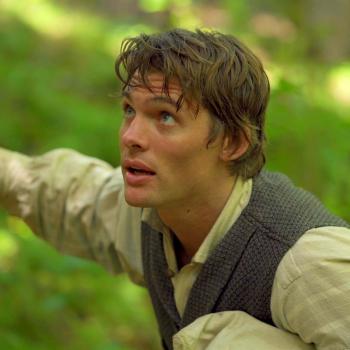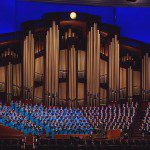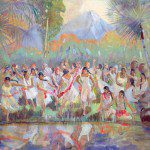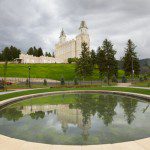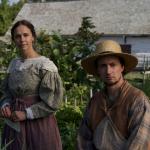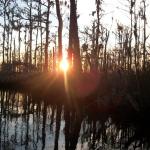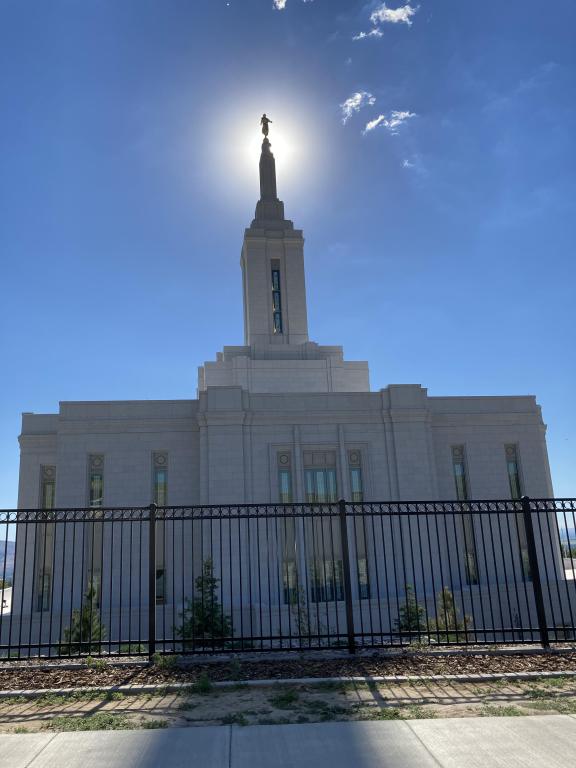
***
I’ve been thinking of the witnesses to the Book of Mormon again today, Monday, 28 June 2021. (Some of you, of course, will perhaps be wondering whether I ever think of anything else. Trust me, though: I do. For example, I occasionally think of terrible drivers on I-15.) But, as I’ve mentioned here before, today was, very likely, the 192nd anniversary of the day on which David Whitmer, Martin Harris, and Oliver Cowdery accompanied the Prophet Joseph Smith into the woods and, after prayer, saw an angel come from heaven, saw the golden plates from which the Book of Mormon was translated, and heard the voice of God decaling the translation to be true.
I find it very difficult to overstate the importance of that event and of their faithful, lifelong testimony to what they had seen and heard.
By the way, we found out just after noon today that Interpreter’s Witnesses film won a bronze Telly in the Religion/Spirituality category. The Telly, I’m told, is an “inside-the-industry” award that is based on production quality, etc., rather than merely on popularity. I would have preferred the gold, of course, but it’s not even clear to me that the Telly comes in gold. In my brief look at the site, I saw only silver and bronze. And, since I didn’t know that we were even entered in the competition, this comes as pure and entirely unexpected gravy — to me, at least.
***
A new article — actually, as we’ve been doing for quite a while now on Mondays, a new reprint of an article previously published in an Interpreter Foundation book — went up on Monday at noon in Interpreter: A Journal of Latter-day Saint Faith and Scholarship. I have been slower than usual in getting to it because I’ve been on the road (and necessarily, therefore, away from my computer) for much of the day:
David E. Bokovoy, “Ancient Temple Imagery in the Sermons of Jacob”
Abstract: This essay makes a compelling argument for Jacob, the brother of Nephi, having deep knowledge of ancient Israelite temple ritual, concepts, and imagery, based on two of Jacob’s sermons in 2 Nephi 9 and Jacob 1-3. For instance, he discusses the duty of the priest to expiate sin and make atonement before the Lord and of entering God’s presence. Jacob quotes temple-related verses from the Old Testament, like Psalm 95. The allusions to the temple are not forced, but very subtle. Of course, Jacob’s central topic, the atonement, is a temple topic itself, and its opposite, impurity, is also expressed by Jacob in terms familiar and central to an ancient temple priest. The temple is also shown as a gate to heaven.
[Editor’s Note: Part of our book chapter reprint series, this article is reprinted here as a service to the LDS community. Original pagination and page numbers have necessarily changed, otherwise the reprint has the same content as the original.
See David E. Bokovoy, “Ancient Temple Imagery in the Sermons of Jacob,” in Temple Insights: Proceedings of the Interpreter Matthew B. Brown Memorial Conference, “The Temple on Mount Zion,” 22 September 2012, ed. William J. Hamblin and David Rolph Seely (Orem, UT: The Interpreter Foundation; Salt Lake City: Eborn Books, 2014), 171–186. Further information at https://interpreterfoundation.org/books/temple-insights/.]
Since, sadly, Dr. Bokovoy’s attitude toward the Restoration and toward the Church of Jesus Christ of Latter-day Saints is not what it once was, and since the article is nearly a decade old, some have professed shock and even outrage that we would republish it.
However, we thought then and we think now that it’s a solid and thought-provoking piece, and that our readers would enjoy it.
Less importantly but perhaps more directly to the point, however — and as a a matter of fact — although he is a former student of mine and a former colleague in the establishment of the Interpreter Foundation, David’s essay was given no special treatment. We have been reprinting articles from our books and putting them online for over a year now. Our goal is to make them more accessible, to gain a wider audience for them. In this case, as in all of the others, “Ancient Temple Imagery in the Sermons of Jacob” has simply been reprinted in the order in which it appeared in the original Interpreter Foundation book from which it was taken: William J. Hamblin and David Rolph Seely, Temple Insights: Proceedings of the Interpreter Matthew B. Brown Memorial Conference, “The Temple on Mount Zion,” 22 September 2012. This is readily and incontrovertibly apparent if one compares the publication history of the Interpreter journal over the past few months with the table of contents of Temple Insights. Our methodical, orderly, and systematic progression through the articles is clearly evident. In other words, this is simply the latest reprint in a lengthy series of reprints.
As is plainly indicated by the full title of the volume from which David’s article is drawn, his paper was originally given as a presentation at an Interpreter Foundation conference back in 2012. (Since shortly thereafter, a video of David’s presentation has been available on the Interpreter Foundation website.). It was then published, as it was always intended to be published, as part of the proceedings of that conference in an Interpreter Foundation book that is still in print and still for sale. And, now, the Interpreter Foundation has republished his article, without alteration (except, of course, for pagination and format), in its journal and has made his article available at no charge via a number of online platforms. Why? Because we believe that it deserves a wider audience. And we certainly didn’t want to seem in any way to be shunning or censoring him.
I’ve always been fond of the Prophet Joseph Smith’s words to William W. Phelps after a period of estrangement between them. Among other things, he wrote: “Come on, dear brother, since the war is past, For friends at first, are friends again at last.”
I hope that the same may someday — and preferably someday soon — be appropriate to say in our case and that of our friend for many years, Dr. David Bokovoy. In the meanwhile, however long that meanwhile may be, I hope that Interpreter‘s readers will enjoy and benefit from this interesting article.



